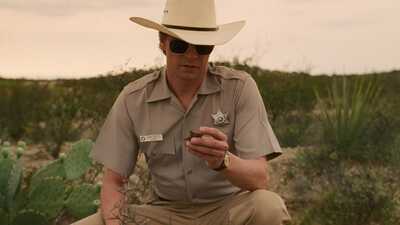One of the stunning things about “Lone Star” is how it deals with the possibility that some truth, though, is bad.
At the time that I was writing the movie, you know, the former Yugoslavia was falling apart, and you would hear people say, well, we’re killing them because they stole our land back in 1300. And you’re going, oh my God, they’re killing each other because of this ancient story that, true or not, is not useful anymore in determining the fate of real people who are alive right now. It’s actually harmful. So let’s look into that legend and maybe, you know, push it aside a little bit or actually revise it and tell more of the truth about it so we can understand the real, humane, lessons it’s trying to tell. We are a truly fraught place. We’re so fractured. Here’s a line and when people are on this side, they’re this and on this side, there’s that and no one is crossing those lines anymore. There are so many belief systems running around that any kind of unity even over issues of reality is so fractured. It makes the idea of ever having a unified country very, very difficult.
“Lone Star” is ultimately a hopeful film. Where do you find hope now?
Oh boy. You know, maybe it’s when you talk to some young people who don’t accept the official story, you know, who are looking into it and becoming radicalized behind the right causes. Which is not to say the young aren’t prone to grabbing onto something that’s pretty raw, but if they can keep an open mind. I think the reaction to the abortion laws has been really positive, how women have gotten out and just said, no, this won’t stand. Any time people are able to demonstrate empathy for others experiencing things they aren’t and might never experience themselves – there’s hope in that. I do find hope, but it, but you know, we’re in a dangerous place. It’s hard not to feel like the problem isn’t one little group anymore. It’s a lot of our population that’s the problem–the ones who are obvious, but also the ones who don’t want to deal with what’s really going on. When we’re afraid, we grab onto these narrow belief systems full of magical thinking and a lot of really retrograde thinking in them, too, a lot of bigotry and ideas that aren’t very well thought through or based on experience and reason.

Can you talk to me about the conversation between Sam and Pilar on the banks of a river that transitions to them as children? It reminds me of that Heraclitus quote about never being able to step in the same river twice.
Yeah, we literally shot it at the Rio Bravo, the Rio Grande, and you know several times in the movie I have characters talk about the line between things, you know, and that line may be a border, it may be a race, it may be a rule, like you’re not supposed to marry your relatives, you are defined by those lines drawn around you and between us. What’s on the other side is one thing, and what’s on this side is something else, and they can never mix. I drove out here to California and we stopped and we looked at the border wall, which looks like a very beautiful Cristo art installation thing. It’s cost us billions of dollars. It’s not really doing us much good. But it is symbolic to a lot of people of lines and therefore the security of our interior spaces so we’re, you know, dumping all this money into it to keep the loudest a little quieter. But that’s all it does, serve as a meaningful symbol to a lot of people. But what if we spent this energy feeling each other out about how these lines truncate our humanity? is it possible to erase that line between what our parents have wanted to segregate, that keeps us from experience and has widened the distance between us? It’s easier to build a tangible wall on an invisible border.

